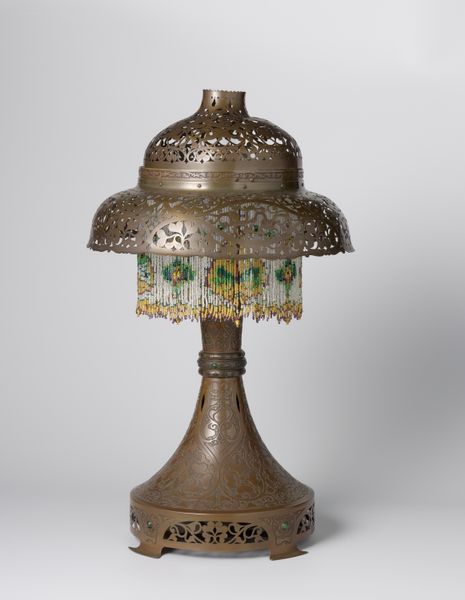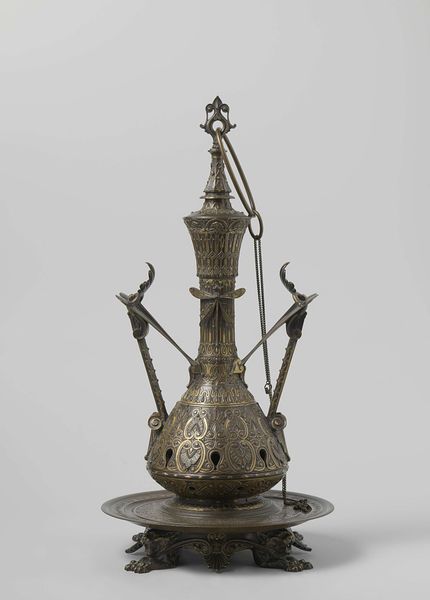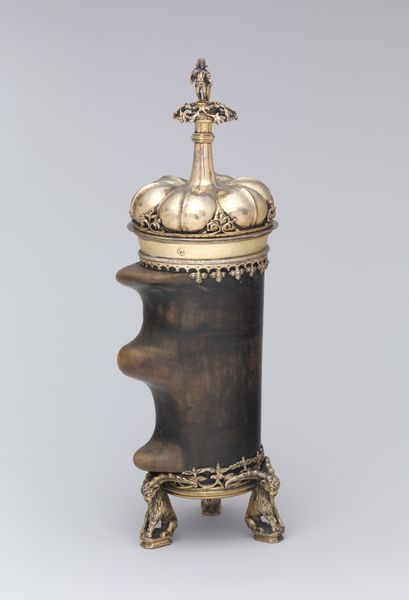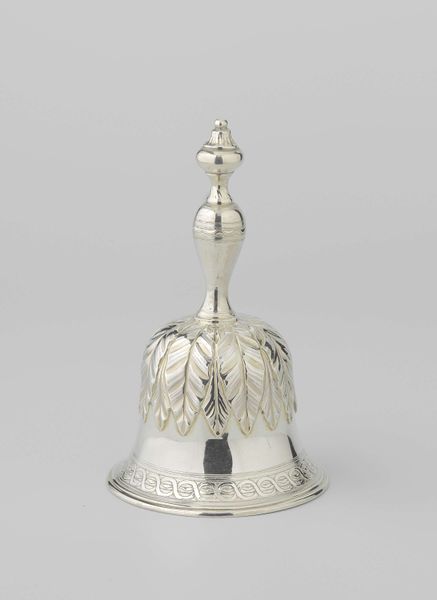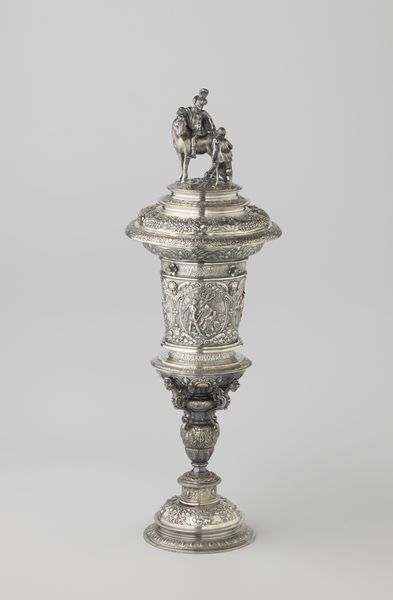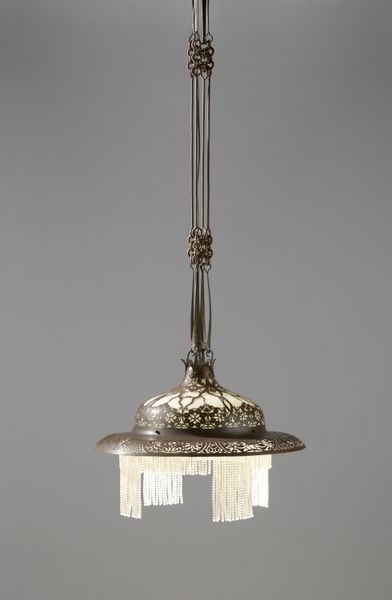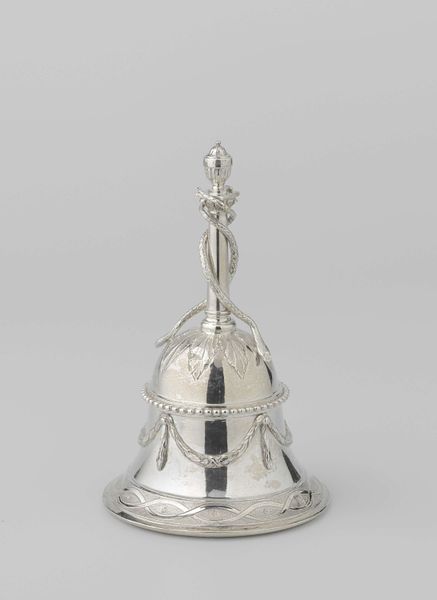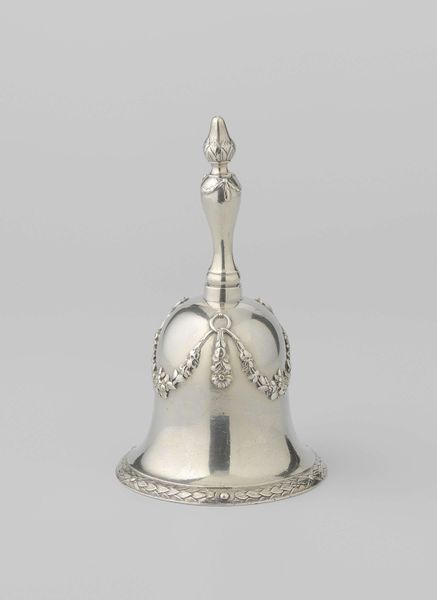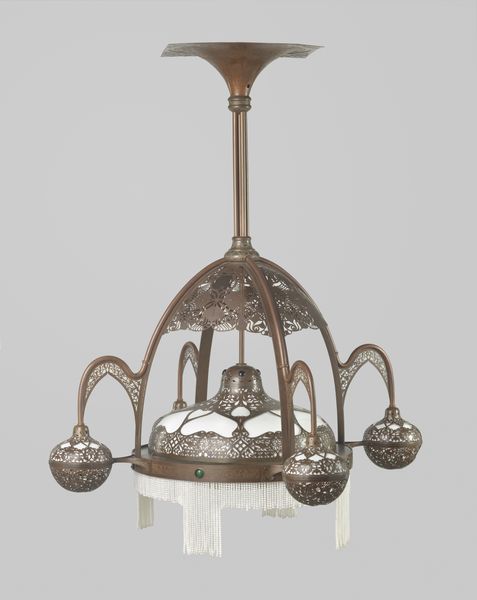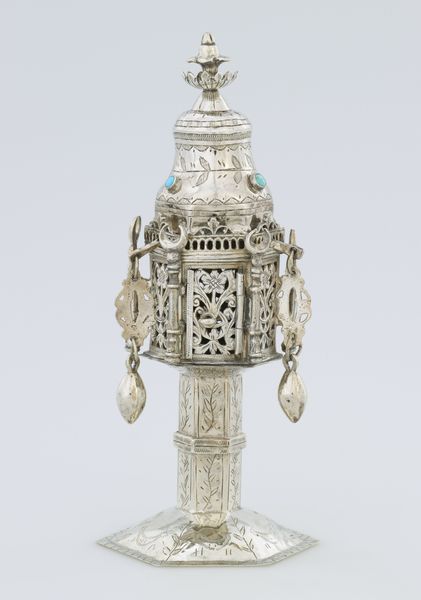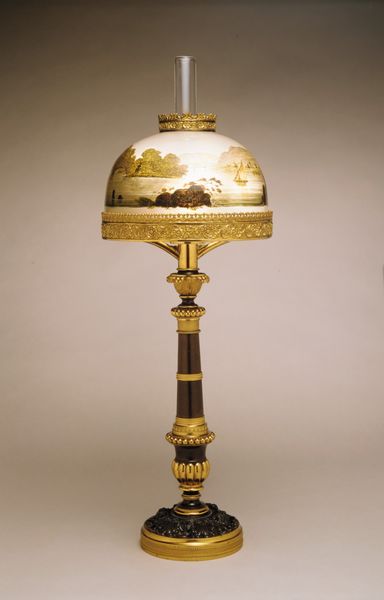
Eetkamerlamp van koper met een volant van glazen kraaltjes c. 1914
0:00
0:00
theonieuwenhuis
Rijksmuseum
brass, metal, sculpture
#
art-nouveau
#
brass
#
metal
#
sculpture
#
sculpture
#
decorative-art
Dimensions: height 240 cm, diameter 70 cm
Copyright: Rijks Museum: Open Domain
Curator: My eye is immediately drawn to the intricate filigree—a real web of brass catching the light. There's an unexpected lightness to this heavy material. Editor: Indeed! And this brings us to "Eetkamerlamp van koper met een volant van glazen kraaltjes," or Dining Room Lamp made of copper with glass beads, created circa 1914 by Theo Nieuwenhuis. It resides here at the Rijksmuseum. What's striking is how a functional object is elevated into sculpture. Curator: Exactly. Look at how the industrial material of brass is meticulously worked. We're not just talking about function; the artisan, Nieuwenhuis, is showcasing skills associated with jewelry or precious metal work usually reserved for high art. What about its location here at the Rijksmuseum? Editor: That’s fascinating because the presence of decorative arts within the Rijksmuseum says so much about changing attitudes toward design's place in the national narrative. This lamp, originally destined for a dining room, now illuminates aspects of early 20th-century Dutch social history and the rise of Art Nouveau. The beads, do they catch your attention in light? Curator: Absolutely. They serve a function while becoming decorative—acting almost as jewels or adornments. Thinking of the social context in which Nieuwenhuis made it, do you agree the intended setting affects our interpretation? Editor: Unquestionably. The dining room itself held considerable social weight – a space for display and entertaining, a site for negotiating class and taste. So a lamp such as this became not just a source of illumination, but a potent symbol of domestic aspiration. And those aspirations must also have been fueled by broader socio-economic shifts. Curator: This shift certainly fueled the demand for such pieces, didn't it? Now, imagine the artisan, repeating patterns in brass. The tension between standardization and artistic flair really gets my attention, highlighting the labour and skills involved. Editor: I hadn't considered it so deeply until now. Seeing it displayed as high art gives it a unique perspective on the time period, with its display suggesting evolving tastes and priorities. Curator: And hopefully a fresh perspective on what we now perceive as art itself, not to mention on the socio-economic structures that supported the making and consumption of objects such as these. Editor: A point well made. Considering the cultural dynamics it once occupied alongside its presence here today is crucial. It truly highlights the narrative power objects like this have to enrich our understanding.
Comments
No comments
Be the first to comment and join the conversation on the ultimate creative platform.
